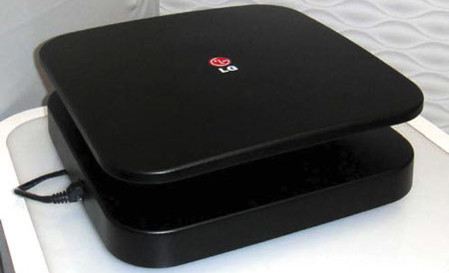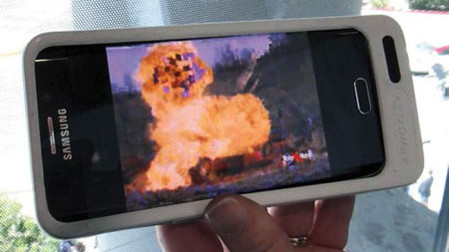Coming Soon: ATSC 3.0!
WASHINGTON—A successful plug-fest in Baltimore, an impressive display of ATSC 3.0 technology at the NAB Show in Las Vegas, an FCC Public Notice requesting comment on a widely supported request to allow broadcasters’ use of ATSC 3.0, and a packed 2016 ATSC Broadcast Television Conference-“Countdown to Launch” in Washington, D.C. in May indicates ATSC 3.0 may soon be coming to a TV or tablet near you!
TEST TRANSMISSIONS
ATSC 3.0 test transmissions are on the air now from Sinclair’s experimental single frequency network (SFN) on Channel 43 in Baltimore and Washington, D.C. Over-the-air ATSC 3.0 was on display at the NAB Show from two different transmitters, and multiple tests, including VHF over-the-air testing, have been conducted in Cleveland.
Manufacturers I talked to at the ATSC conference told me they are getting requests from several broadcasters for equipment for ATSC 3.0 tests, indicating we may see more ATSC 3.0 experimental test stations on the air later this year.
ATSC 3.0 transmissions, of course, aren’t of much use unless there are receivers. One of the most significant ATSC 3.0 products I saw at the NAB Show was a chip a third of the size of a postage stamp—more about that later.
I remember sitting in sessions at the NAB convention and at the IEEE broadcast symposium two decades ago trying to figure out how PAT, PMT, PIDs, ETT, EIT, STT, VCT, etc., all fit together to create an ATSC DTV stream. How was I going to get this to the transmitter? Skeptics said “Table 3,” showing 18 different display formats for video, was overly complicated, but at least there was only one transmission format—8VSB at 19.39 Mbps. Now, in 2016, we’re looking at a standard that offers an almost endless number of options for data rate and robustness and multiple ways to package and deliver content (or data) to viewers (or devices). It is complicated, but sessions at the NAB Broadcast Engineering Conference and a full-day tutorial before the ATSC Broadcast Television Conference helped prepare attendees for the new standard.
Perhaps the best way to learn is to put hardware together and see what works and what doesn’t.
Plug-fests are important because they give manufacturers a way to see if their understanding of the ATSC 3.0 specifications are correct and whether a signal generated on manufacturers’ equipment can be received on other manufacturers’ equipment. The purpose of the testing is not to rate performance, but to see if there are parts of the specifications that need to be clarified or corrected and make sure manufacturers agree on how specific elements are generated and decoded. During the plug-fest manufacturers can update their code and retest as time allows. Reports of plug-fest results, even inside ATSC, do not identify manufacturers by name.
A unique feature of the Baltimore plug-fest was that participants had an over-the-air signal from Sinclair’s experimental station they could use to check their receivers. One of the many elements checked in the Baltimore plug-fest was the ability to generate and decode layered division multiplexing (LDM) signals, an important feature in ATSC 3.0 that I described last year in RF Technology “LDM-Stacking Signals for Improved Performance.”

Fig. 1: Zenith Electronics, LG Electronics, Harmonic, Triveni, GatesAir, Dolby and Digital Alert Systems had a rack of equipment generating an ATSC 3.0 signal that included prerecorded and live content as well as AWARN emergency alerts
So far, the plug-fests have focused on the physical layer. Expect to see additional plug-fests where upper layer compatibility is checked.
It was encouraging to see that even with the standard still under construction many companies were able put together demonstrations of ATSC 3.0 at the NAB Show. One example of cooperation between companies was evident at the entrance to the ATSC 3.0 Broadcast Pavilion at the back of South Hall Upper. Zenith Electronics, LG Electronics, Harmonic, Triveni, GatesAir, Dolby and Digital Alert Systems had a rack of equipment (Fig. 1) generating an ATSC 3.0 signal that included prerecorded and live content as well as AWARN emergency alerts. The signal was sent to Black Mountain where it was transmitted over the air on Channel 18. For details on the gear, see Triveni Digital's press release. Sinclair provided an over-the-air ATSC 3.0 signal from a test transmitter on Channel 45 at Black Mountain.
ATSC 3.0’s use of Internet Protocol requires a different architecture than ATSC 1.0. Programs can be encoded and simply sent as transport stream over IP; encoded with an ISO BMFF encoder streamed using MPEG Multimedia Transport (MMT) or encoded using Dash and streamed using Real Time Object Delivery over Unidirectional Transport (ROUTE). The different program elements, as well as signaling, are sent to an ATSC Scheduler that determines the appropriate place and time in the transmitted signal (physical layer) for each element. Finally, the signal is sent to the STL and on to the modulator, transmitter and antenna.
Enensys had a demonstration set up in the lobby at the ATSC Broadcast Television Conference showing a complete ATSC 3.0 signal path from encoder to modulator with HEVC encoders, a ROUTE server, their ATSCheduler, IP Guard error correction and a modulator. Enensys plans to implement the STL/SFN interface being developed in the ATSC TG3-S32 small group.
Enensys also handed out a large poster showing details of the ATSC 3.0 architecture. I found it a big help in understanding how all the pieces of ATSC 3.0 work together. Download it here.
WHAT ABOUT RECEIVING?
Transmitting ATSC 3.0 is fine, but how do you receive it? I was happy to see Avateq showing a monitoring receiver for ATSC 3.0 that not only displayed the RF signal characteristics and performance, but allowed decoding the tables transmitted in the bootstrap signal and preamble. For now, this is the only piece of equipment I’m aware of that can do a full analysis of an ATSC 3.0 signal starting with the RF waveform.

Fig. 2: The ATSC 3.0 receiver chip used in the over-the-air gateway LG Electronics was showing in the ATSC Consumer Experience at the NAB Show.
About that chip I mentioned earlier... The ATSC 3.0 receiver chip used in the over-the-air gateway LG Electronics was showing in the ATSC Consumer Experience (Fig. 2). If you are familiar with LG’s ATSC receiver chips, all (as far as I know) of LG’s ATSC/QAM receiver chips are in the LGDT-330X family. Until recently, the LGDT-3306A was the latest member of the family and included ATSC 1 and QAM demodulators.
The LGDT-3307A chip, shown at the NAB Show, includes ATSC 1, ATSC 3.0, QAM demodulators. The model number implies the LGDT-3306A was the last LG ATSC demodulator without ATSC 3.0 capability. Neil Smith, one of Zenith Electronic’s lead R&D engineers on the chip, was clearly proud of the company’s accomplishment. He hopes to see the LGDT-3307 in a wide range of devices, including USB tuners.
Having an ATSC 3.0 receiver in silicon is a major milestone. One of the DVB-T2 pioneers told me it took a year after the DVBT2 standard was finalized until silicon was available for it, but with ATSC 3.0, silicon was available even before the standard was finalized.

Fig. 3: At the NAB Show, Airwavz.TV demonstrated the “Quarterback,” an Android smartphone case that includes a battery, ATSC receiver and a unique fold-out antenna.
I noticed Bonnie Beeman of Airwavz. TV in the ATSC 3.0 Consumer Experience walking around with a smartphone that was receiving TV (Fig. 3). The Android smartphone’s case (called the “Quarterback”) included a battery, an ATSC receiver, and a unique fold out antenna on the back of the case. Unfortunately, it was receiving an ATSC 1 signal from KBLR, not one of the ATSC 3.0 transmissions. Seattle-based Airwavz. TV wants to create an ATSC 3.0 version and Beeman explained that it would be a valuable way to deliver information in emergencies, when cell sites are often jammed or fail. The ATSC 3.0 robust bootstrap has two bits for emergency alerting that can be used to wake up cell phones or TVs when new or updated emergency information is available.
The pace of activity in the first five months of 2016 is an indication ATSC 3.0 is off to a good start. It isn’t too soon to start thinking about what changes might be needed at the transmitter site for ATSC 3.0. More on that next month.
Doug Lung is vice president of Broadcast Technology, NBC/Telemundo stations. He welcomes your comments and questions. Email him at dlung@transmitter.com.
Get the TV Tech Newsletter
The professional video industry's #1 source for news, trends and product and tech information. Sign up below.

Doug Lung is one of America's foremost authorities on broadcast RF technology. As vice president of Broadcast Technology for NBCUniversal Local, H. Douglas Lung leads NBC and Telemundo-owned stations’ RF and transmission affairs, including microwave, radars, satellite uplinks, and FCC technical filings. Beginning his career in 1976 at KSCI in Los Angeles, Lung has nearly 50 years of experience in broadcast television engineering. Beginning in 1985, he led the engineering department for what was to become the Telemundo network and station group, assisting in the design, construction and installation of the company’s broadcast and cable facilities. Other projects include work on the launch of Hawaii’s first UHF TV station, the rollout and testing of the ATSC mobile-handheld standard, and software development related to the incentive auction TV spectrum repack. A longtime columnist for TV Technology, Doug is also a regular contributor to IEEE Broadcast Technology. He is the recipient of the 2023 NAB Television Engineering Award. He also received a Tech Leadership Award from TV Tech publisher Future plc in 2021 and is a member of the IEEE Broadcast Technology Society and the Society of Broadcast Engineers.
